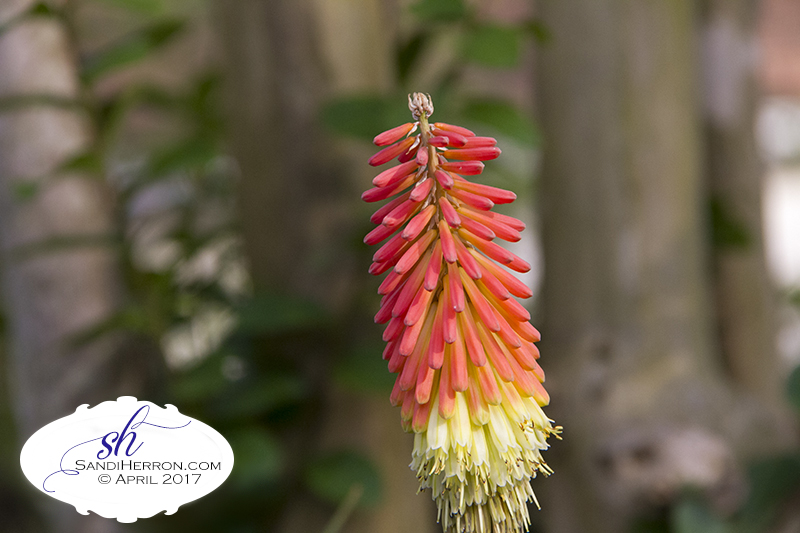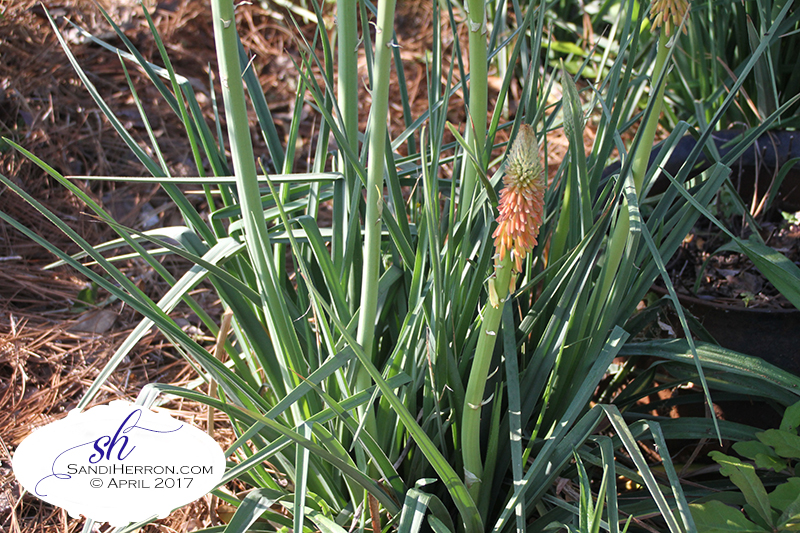A few years ago, a plant introduced itself to one of my front garden beds. I never planted it. It just showed up one spring and made itself at home. After researching, and discussions with a knowledgeable garden friend, I finally had a name. It is commonly referred to as Red Hot Poker Plant but also is known as Torch Lily and Poker Plant.
Native to South Africa, this drought and heat tolerant plant is easy to grow in the Southern garden and hardy in zones 6a to 10b. It is common to our area of Alabama, but until it mysteriously showed up in the garden that spring, I never knew about this plant. Since its arrival, it has multiplied and given so much interest and enjoyment each year. This year is no disappointment!
This beautiful and unusual perennial features flower spikes that are 24 to 36 inches in height. Its tubular florets are a favorite with hummingbirds, as well as bees and butterflies.

Red Hot Poker Plant | Life at Spring Meadows | Gardening Living Creating
GROWTH HABITS
Showcasing flower spikes of red, orange, cream, yellow, or coral, the flower stalks bloom late April and will last for weeks. If the spent flowers are removed and not allowed to go to seed, the plant will continue to bloom from spring until fall. When removing the spent flowers, ONLY trim the stalks at the base where they emerge from their leaves, but never remove the leaves during the growing season.

Red Hot Poker Plant features sword-like leaves that are long and sharply pointed
The sword-shaped leaves are long and sharply pointed. During the growing season, the leaves are busy gathering energy from the sun to last throughout the winter months. In the fall, tie the leaves together to form a tent over the crown of the plant. The drying leaves will give needed protection during the cold months. In early spring, cut the plants back to within three inches of the crown, removing the “dead foliage tents” from the previous season. Use care to not cut into the crown when removing the dried leaves.
Always remove any dead plant material from the garden bed to prevent a nesting area for pests. In the fall, apply fresh mulch around your plant.
PLANTING GUIDE FOR THE RED HOT POKER PLANT
For a showy display in the garden bed, it is best to grow the Red Hot Poker plant in clumps. However, it will only take two seasons for your plant to reproduce and form attractive clumps. Therefore, when planting, do not overcrowd. The ideal planting guide is 18 to 24 inches apart for seeds or single plants.
Harvested seeds can be sown 18 to 24 inches apart, 1/4 inch deep, in the early spring garden. If planting from clumps, divide and plant 18 to 24 inches apart and plant depth is the same as they originally grew.
Soil should be rich with aged compost. Plant in a sunny location with loose soil that drains well to prevent root rot.
In the fall after flowers have faded, layer fresh mulch around the base of the plants.
IRRIGATION AND FERTILIZATION
During its flowering season, provide irrigation in the amount of 1-inch per week.
Apply a liquid or granule type slow-release fertilizer in the spring when plants begin to grow. Repeat fertilizer monthly if not using slow-release.
PROPAGATION
Established Plants: Plants continue to produce if divided every three to five years. Divide in early spring or late fall and replant with the crowns just above ground level. Since this plant grows from rhizomes, you can easily dig around the edges and lift out baby plants without disturbing the main plant.
Seeds: At the end of the season, allow the seed heads to dry on the plants, then gather and store the seeds in the refrigerator for up to four weeks or more. Once chilled, seeds are ready to plant outdoors. Seeds should germinate in 21 to 28 days.
RED HOT POKER PLANT – MY FINAL THOUGHTS
Red Hot Poker Plant is a fun and interesting addition to the garden. I am glad it “dropped in” a few years ago and decided to stay! I have not noticed any pests problems with this plant, easy to grow, and made it through the drought of 2016. It gets an A+ in my plant lineup!
Reap and sow! Enjoy gardening!




Sandi,
Thank you for sharing the very informative article “Red Hot Poker Plant.” I have seen them, but I knew nothing about them. You passion for gardening is contagious through your writing. You generously share your insight in an easy-to-follow manner. Plus you grace the blog sight with lovely photos that inspire me to grab a spade and go have fun in my own flower beds! Blessings!